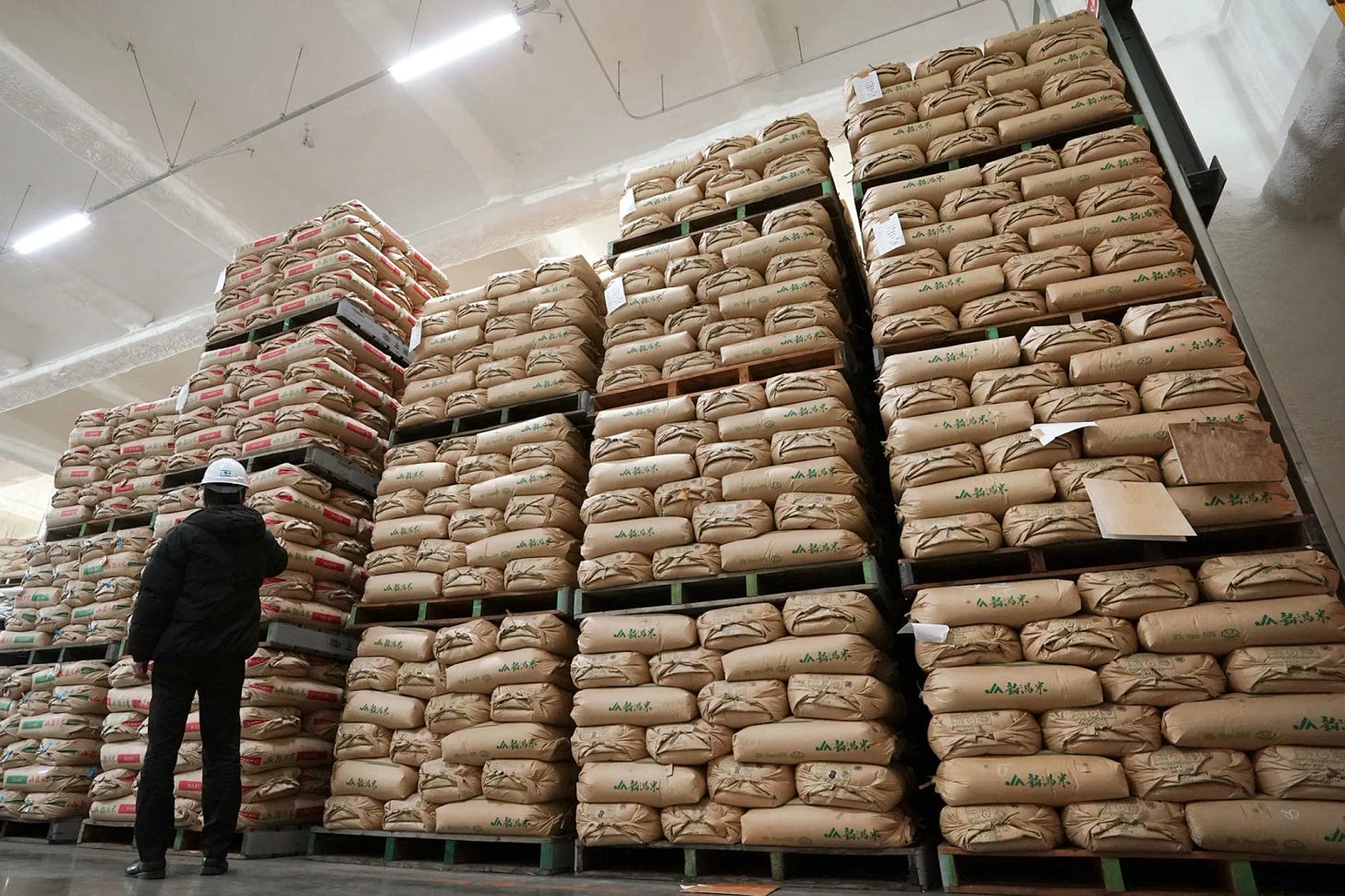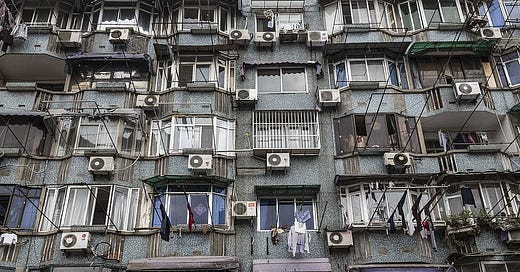Sunny climate stormy climate | Weekly digest #69
India may restrict minimum temp in ACs to 20 deg C, Japan has a rice crisis and why US climate scientists did a 100 hour livestream
Hello folks!
Welcome to another edition of your regular climate news digest, where I bring one sunny story that gives hope and two stormy ones that are a cause for alarm. Hope you like them!
🌞 Sunny news 🌞
1. ACs in India may soon have min temperatures set at 20 degrees
What are we talking about?
Union Power Minister announced on Tuesday that the government is preparing to bring in a fixed temperature range for ACs, where they will be allowed to operate only in the range of 20-28 degrees.
Currently, ACs cool up to 16 degrees. If the mandate gets implemented, all new models of ACs that are sold (both at home and commercial spaces) will not be able to cool below 20 degrees or above 28 degrees.
Manufacturers will also need to reprogramme devices or issue software updates to ensure compliance with the new 20°C–28°C range. Details on how this will be done are not yet available.
Why does this matter?
Every 1 degree higher temperature results in ~6% energy saving, so this could result in almost 24% energy efficiency.
20 degree is typically comfortable, and should serve the purpose in most cases. We don’t need to have ACs running at 16 degrees and people wearing jackets!
In fact, the Bureau of Energy Efficiency (BEE) has long advocated for temperatures being set at 24 degrees, that is considered necessary for ‘thermal comfort’
India is buying ACs at a phenomenal rate. We apparently sold 1.4 mn ACs last year and this figure will only increase as the heat gets increasingly unbearable. AC has become a necessity and not a luxury.
While ACs have become inevitable to maintain some comfort, it’s even more important we work on efficiency to manage the total energy consumption.
This step is aimed at regulating energy use across households and commercial spaces, especially at a time when India is grappling with rising electricity demand and increasingly severe heat waves.
What also stands about this move is that it indicates clearly that we need demand side and behavioural changes as well if we want to address our climate challenges
Sources for further reading
🌩️ Stormy news 🌩️
2. Japan is facing a rice crisis; prices have doubled over the last year!

What are we talking about?
Japan is facing a “rice crisis” as the price of rice has almost doubled in the last 1 year.
Government data released last week shows the price of rice rose 98.4 % year-on-year in April. As of June, a 5-kilogram bag of rice cost on average ¥4223 ($29.15)!
In some cases schools have cut back on the days they serve rice for lunch. Shops and restaurants have hiked the prices of their rice dishes.
Why is this happening?
There are several factors at play, but it all goes back to the summer of 2023, when record-breaking heat damaged rice crops across Japan. 2023 and 2024 had seen record high temperatures across the globe driven by long term global warming and made worse by El Nino.
The rice harvest that year hit its lowest level in more than a decade.
Other factors that have made it worse
Earthquake warning in Aug 2024: The Japanese government issued a high-impact earthquake warning. Though the quake never occurred, the public rushed to stockpile essentials, especially rice.
Post-pandemic tourism: Japan’s hospitality sector has seen a sharp rebound with a record 37 mn tourists in 2024 , creating additional pressure on rice stocks.
Long-term government policies, that restrict production as well as imports have meant that swiftly remedying the issue has been difficult.
Sources for further reading
3. Trump makes massive cuts in funding for climate science; scientists conduct a 100 hour live stream to protest
What are we talking about?
US climate scientists conducted an 100 hour live stream to draw attention to the massive cuts in their funding and the impact it could have. In the livestream, they discussed their work and answered questions from viewers, around the clock.
Since Trump took power in January, he has slashed funding at several climate related agencies in the US, which has resulted in lost jobs and stalled projects. Some of the major impacts expected are:
The website ‘Climate.gov’, which supports public education on climate science, will soon no longer publish new content
More than 100 research projects related to climate change at the National Science Foundation (NSF) have lost funding
The closure of the NOAA’s Navigation Response Team in Florida – one of the network's six national locations - could mean slower response times and longer port closures if hurricanes slam into the U.S. Southeast this summer.
Proposed NOAA cuts also threaten decades-long CO2 data collection.
Why does this matter?
The work done by US agencies like the NOAA has been crucial for reliable weather forecasts and climate projections for the US and also the rest of the world.
For instance, the NOAA has been monitoring CO2 levels since the 1960s. NOAA's carbon sampling program collects air from all over the world. This has been crucial to our understanding of how CO2 levels are increasing and what impact they have, and it would be a big blow to the global community if it were to be stopped.
The cuts in funding to these agencies will impact data collection, research, new innovation, availability of information to the general public and response to disasters.
Sources for further reading
You can read previous editions of the newsletter -
Sunny climate, stormy climate | News Digest #68
Sunny climate, stormy climate | News Digest #67
Sunny climate, stormy climate | News Digest #66
If you liked this newsletter, please hit like or leave a comment. If you are a climate champion and want to take this conversation to more people, please share the newsletter with a friend, family member or colleague who may like it too!






I’ve always thought about how India can enforce solutions and it looks like mandating manufacturers to set AC’s minimum to 20 degrees C should work well!
It’ll be interesting to see details on how the government really plans to implement this, especially for existing air conditioners.
It will also be interesting to see how the public receives this information given the increasingly hot summers (40+ degrees). It would not be a good look if a programmed AC limits the ability to cool off during difficult periods of heat and leads to unintended consequences for health. I wonder if that has been considered with this policy and what research has been done to land on 20 degrees as a sufficient minimum to avoid this.